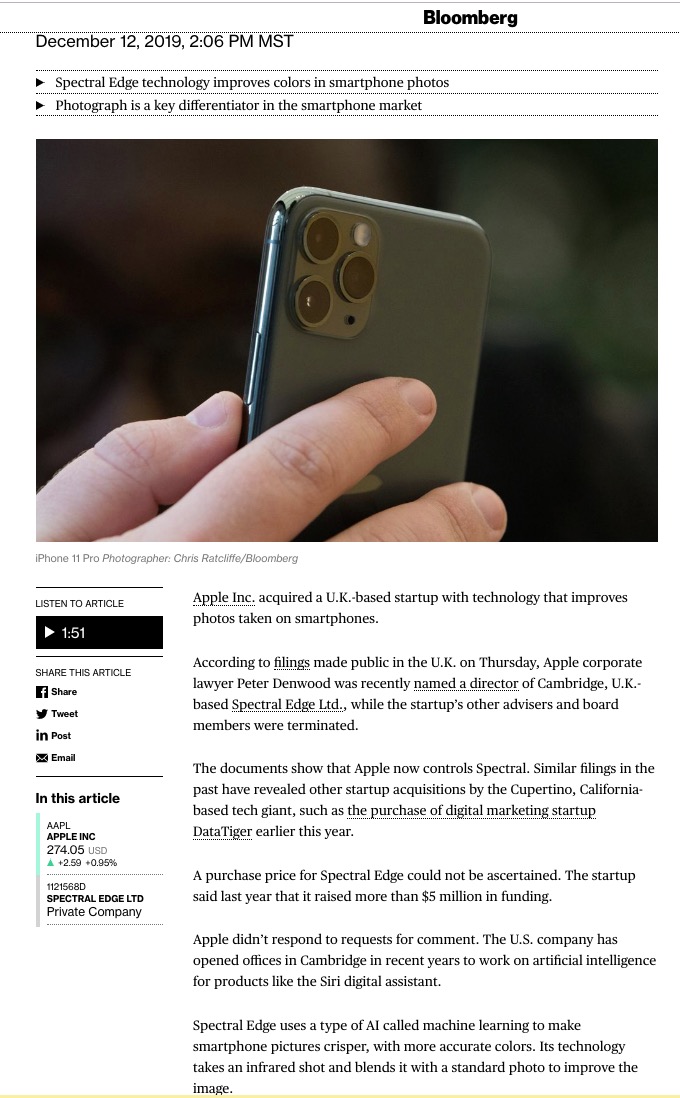Small sensors rule.

Apple’s latest acquisition.
Let’s face it, the photography world needs yet another 35 mm f/1.4 or 24-70 mm f/2.8 lens for full frame as much as it needs a hole in the head.
The future is not with more optics but with better computational photography and Apple knows this better than anyone, with the dramatic improvements in quality visible in the output of the iPhone 11 Pro. Yes, those Sony optics and sensors in the iPhone 11 Pro are tremendous but the secret sauce is in the code. Any phone maker can buy the optics from Sony. Only Apple has the code and the fabulous A13 CPU to drive all those instructions. So Apple’s latest acquisition makes eminent sense while the competition at the major SLR manufacturers continues to make optics no one needs. Like the Pentagon, these camera makers are fighting the previous war.
It’s the likes of Sony and Nikon who should be buying these businesses with their smarts, not Apple, if they are to have any chance of survival. I think those chances fall daily. These companies are like Kodak whose board of directors believed film would never die.
Apple has already shown with its latest cell phones that the need for bulky digital gear falls daily. To all those skeptics who say that small sensors will never equal the output from big gear, I would remind them of what Oscar Barnack accomplished with the Leica a century ago. “Small camera, big picture“ applies as much today as it did when Oscar was a lad.
The photography future is with small, leaving just a few masochists to hump around heavy equipment bags and tripods. Increasingly, their results are indistinguishable from those produced by cell phones in capable hands.